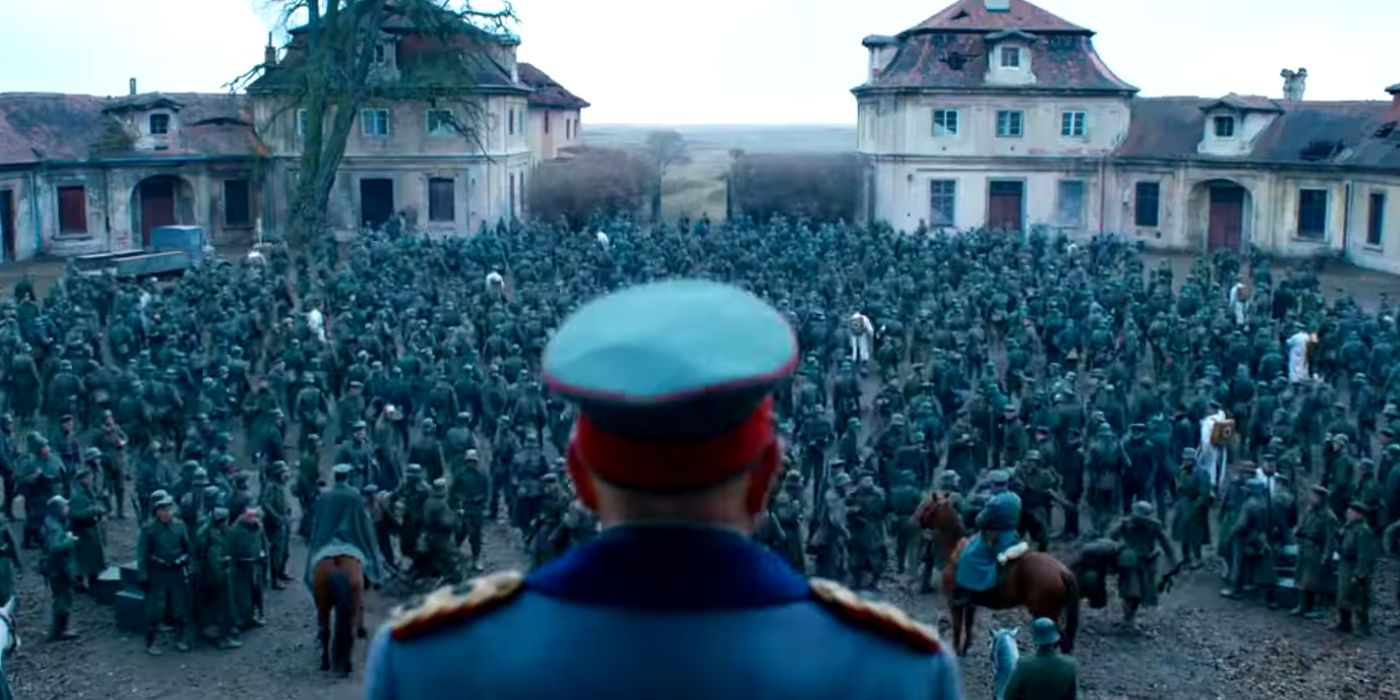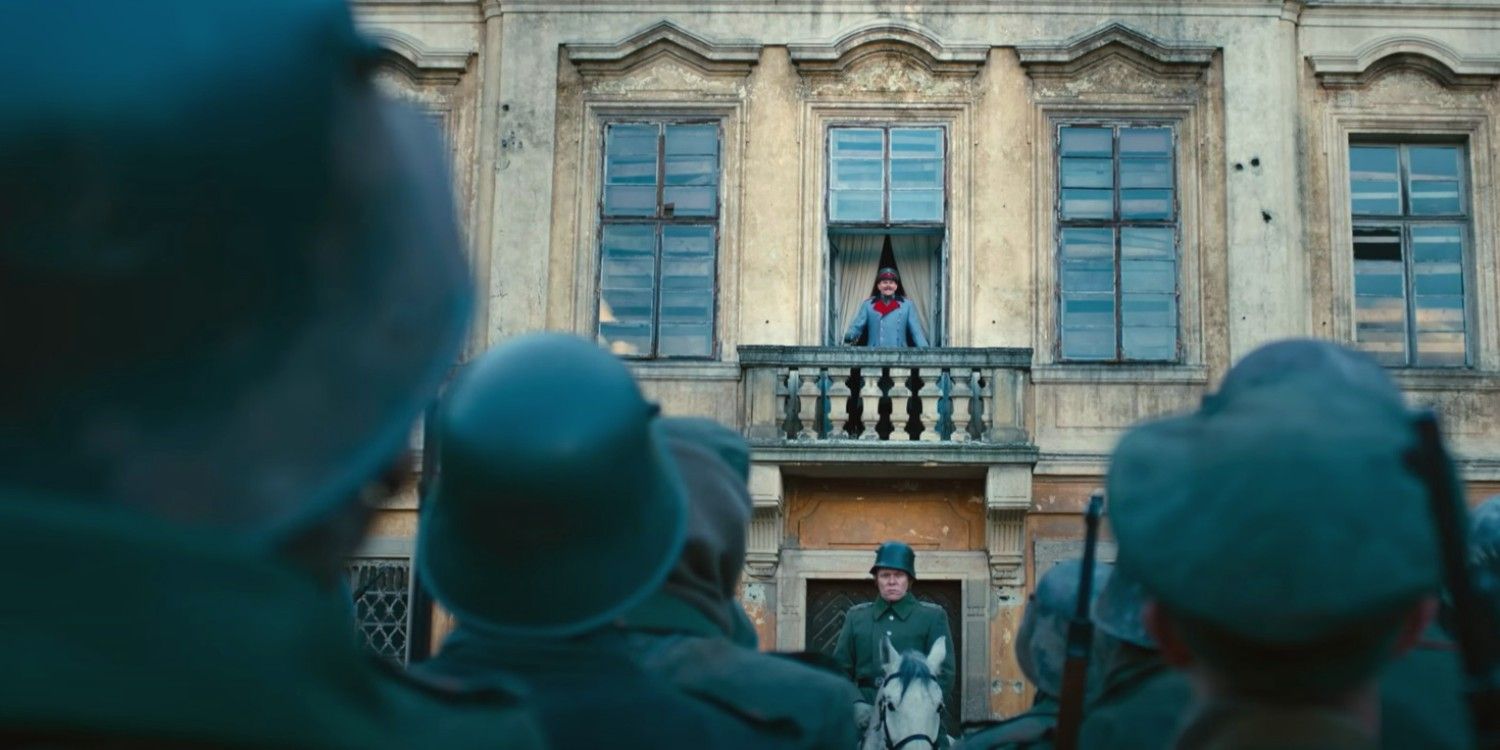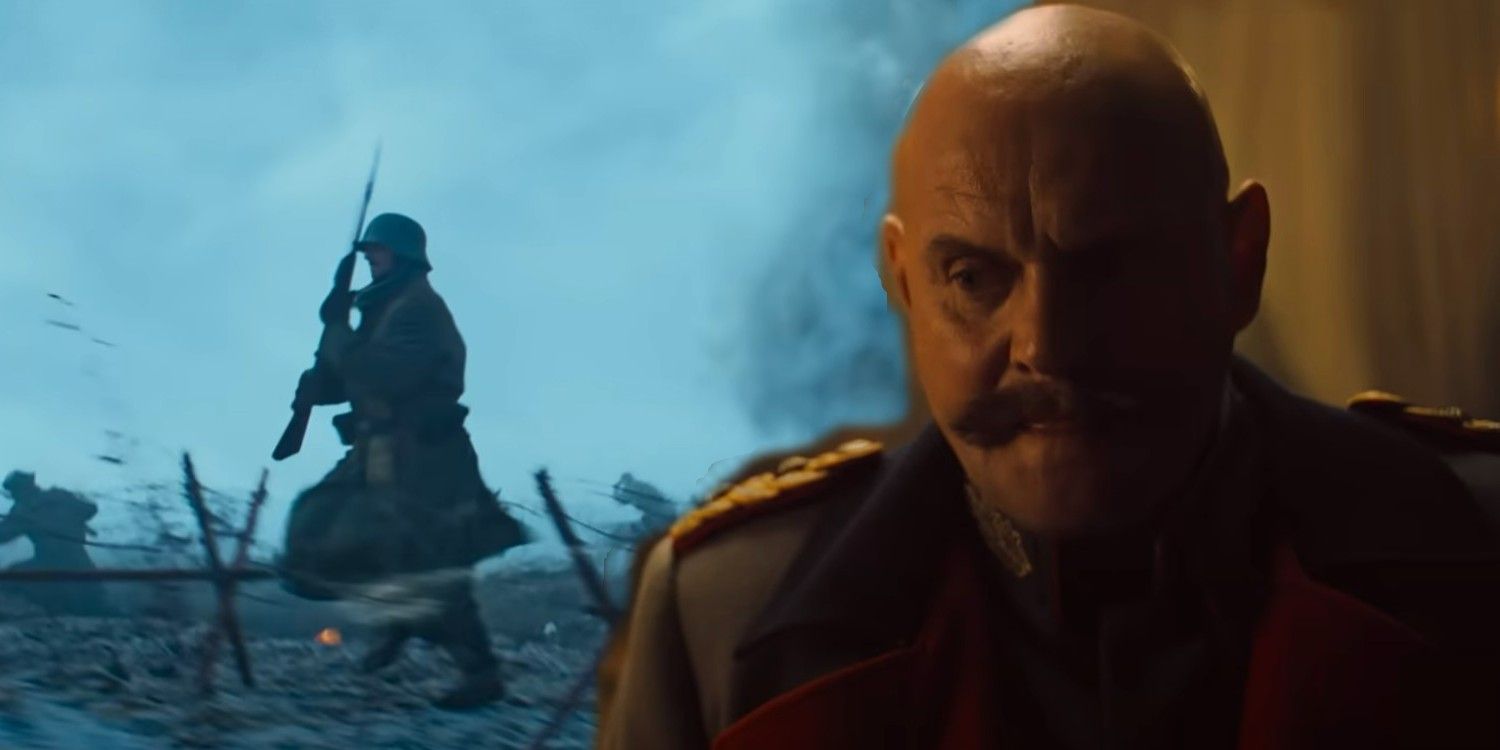[ad_1]
All Quiet on the Western Front features many characters both real and otherwise, but was Paul’s pitiless commander General Friedrichs fictional?
Warning! SPOILERS for All Quiet on the Western FrontUp for 9 Academy Awards, Best Picture Nominee All Quiet on the Western Front includes both real and fictional characters, but it’s unclear which camp the General Friedrichs WWI officer (Devid Striesow) falls under. All Quiet on the Western Front follows the story of Paul Bäumer (Felix Kammerer), a German teenager who enthusiastically enlists in World War in 1917 only to discover the true horror of the western front. Director Edward Berger strove for realism and accuracy in his adaptation of the classic novel by Erich Maria Remarque, even adding elements that weren’t in the original book, such as the subplot of Matthias Erzberger (Daniel Brühl). The movie has received international acclaim, including 9 Academy Award nominations, including Best Picture.
All Quiet on the Western Front has a powerful anti-war message which is seen through the experiences of those in the fight and those giving the orders. General Friedrichs is in the latter category and exemplifies the arrogant and indifferent commanders who turn the war into such a deadly affair. Unlike the movie’s real-life character Matthias Erzberg, who seeks to end the senseless loss of life, Friedrichs is a leader who cares more about the glory he can put to his name than the countless soldier he is losing every day. Just like the movie itself, General Friedrich represents some truth and fiction in All Quiet on the Western Front.
General Friedrichs Wasn’t A Real WW1 General
While All Quiet on the Western Front involves real events and people, General Friedrichs’ WWI military character is not one of them. Like Paul himself, he is a fictional character in the movie whose story in 1917-1918 represents a real demographic of people during the war. Technically, General Friedrichs was not in the original All Quiet on the Western Front book either and is a character created exclusively for the movie, but his stubbornness and characterization as a dyed-in-the-wool nationalist are very accurate to many who held such ideals during WWI.
Part of the movie’s message about the senselessness of war is communicated through characters like General Friedrichs who are ordering men to their deaths every day yet have a complete disconnect from the actual battle. The movie often cuts from the bleak brutality of the soldiers on the front lines to the officers enjoying extravagant meals and complaining about the food. Friedrichs himself likes to imagine he’s a young soldier like All Quiet on the Western Front‘s Paul even though he will never actually fight. He laments that when the war is over, he will have no purpose and thus is willing to send men to a pointless death to achieve some of the glory he badly wants. It never occurs to him that the men actually doing the fighting have no desire for such glory.
The Inspirations Behind All Quiet On The Western Front’s General Friedrichs
From the very beginning of World War I, the leadership on both sides of the war directed their troops according to outdated tactics and goals, including the idea of “total victory” and frontal assaults. The need to utterly decimate their opponents found in the former and the failure to account for new technology, such as the machine gun, in the latter is part of what led to the staggering amount of casualties from WWI and the nearly willful loss of life as the western front stagnated into a stalemate for the private German soldiers.
In All Quiet on the Western Front, General Friedrichs’ WWI approach embodies both of these ideas by his insistence that the armistice is “selling out the homeland” and his virulent insistence that Germany be seen as warriors, no matter the casualties of those who were forced to fight. The use of outdated tactics is particularly true in the cruel irony of Paul’s final battle, in which he dies trying to reclaim trenches from the French — and realizes that this trench was one he and his fellows held earlier in the film. This is telling that the German soldiers are essentially right back where they started after experiencing a massive loss of life while charging the French machine guns.
How Much Of General Friedrichs’ Story Really Happened?
General Friedrichs’ WWI story is, unfortunately, also a mirror of the reality of the last day of the fighting. His insistence on continuing to fight right up to final All Quiet Western Front battle scene, moments before the armistice takes effect, is similar to many commanders in the conflict’s final hours, as several did the same to claim any last bits of territory before the battle lines were frozen or for glory and prestige. One such commander is American General John Pershing, who reportedly prevented word of the cease-fire from reaching his troops. According to Joseph E. Persico’s book 11th Month, 11th Day, 11th Hour, due to leaders such as Friedrichs and Pershing, there were 10,944 deaths on the final day of the war, with estimates of over 2,000 deaths in the final hours of the conflict.
General Friedrichs is one of the most infuriating characters in All Quiet on the Western Front, with the divide between his unrealistic expectations for the war and the consequences of his delusions surfacing as one of the most tragic aspects of the film. His folly in pointlessly sending Paul to his death is one of the key points of All Quiet on the Western Front‘s anti-war themes, as it emphasizes the futility of all warfare. It makes history all the more painful to know that while General Friedrichs wasn’t a real person, he might as well have been.
[ad_2]
Source link




